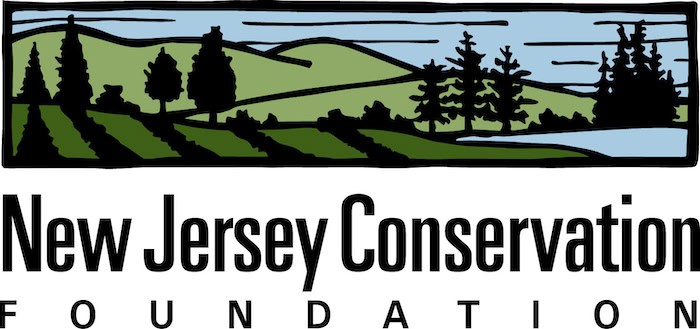By Tom Gilbert
Before being diagnosed with multiple sclerosis in 2009, Karen Richards was an athlete. She could hike for miles on rugged mountain trails and she regularly swam distance laps in a pool.
Having multiple sclerosis changed all that for Karen, who is the New Jersey Conservation Foundation’s director of finance and administration. She now uses a power wheelchair and an adapted van to get around, but it’s still challenging for her to enjoy nature and the outdoors the way she once did.
“I used to think accessing the outdoors meant hiking through the woods on a narrow dirt trail,” she said. “Since I am now in a wheelchair, I see things from a different perspective.”
Like many other New Jerseyans who have disabilities, Karen has learned there is a shortage of trails and natural areas that are fully accessible to people using wheelchairs, walkers and canes, as well as families pushing young children in strollers. There is also a lack of reliable and up-to-date information about the accessible places that do exist.
Fortunately, this situation is changing. Thanks to federal and state legislation requiring access for people with disabilities – and organizations dedicated to advocating for the rights of the disabled – more trails are being planned, built and modified to be inclusive of people of all physical abilities.
One big step forward came last year when the nonprofit Pinelands Preservation Alliance (PPA) launched its “The Pinelands is for Everyone” project to improve access to the million-acre Pinelands National Reserve, New Jersey’s largest concentration of preserved open space.
As a starting point, PPA held two virtual town hall meetings and several focus group conversations to learn about the barriers preventing people with disabilities from using and enjoying natural places in the Pine Barrens.
These conversations included individuals with a variety of physical and intellectual/developmental disabilities, plus caregivers and other professionals who provide services to those with disabilities.
The meetings led to a comprehensive report detailing the challenges and solutions to making the beautiful Pinelands region – which has the advantage of being relatively flat – more accessible.
Two weeks ago, the Pinelands Preservation Alliance launched AccessNatureNJ.org, a mobile-friendly website that uses an interactive map to help people find trails and scenic places in and around the Pinelands that are, at least to some degree, flat, stable and wide enough to be accessible to all.
With a click, users can learn the length, width and surface type of each trail, as well view photos and other useful information.
Another piece of encouraging news came from Burlington County, which just opened the 100% wheelchair accessible Rancocas Greenway Trail.
The 4-mile trail, running through the towns of Delran, Riverside and Delanco, is the first segment of a planned 30-mile multi-use path that will follow the length of the Rancocas Creek from its headwaters near the Burlington-Ocean county border to its confluence with the Delaware River.
As part of the first phase, Burlington County added about a mile of new sidewalks within the three towns and built 39 handicapped-accessible ramps.
About 2.7 miles of the new trail is a 10-foot-wide “off-road” asphalt path, while the remainder consists of “on-road” routes along streets with designated bike lanes and sidewalks for pedestrians.
Much more needs to be done throughout this state we’re in to make sure there are fully accessible trails in every region and ways of letting users know exactly what conditions to expect before they go.
The state of New Jersey, county and municipal governments, and nonprofit conservation groups have made a huge investment in preserving open space and creating parks, natural areas and trails.
It is time to make sure everyone across the mobility spectrum gets to enjoy them and to reap the physical, psychological and spiritual benefits that come from spending time outdoors.
“When creating trails, people need to think outside of trails made for hiking boots and think of a much larger population of people looking to enjoy nature,” advises Karen.
“When creating accessible trails, it’s very important to accurately describe the trail,” she adds. “Three things I have found most helpful to know are: What is the material the path is made of (paved, gravel, sand, rocky, etc.)? Are there benches along the way? And what type of restroom facilities are available?”
To see the PPA’s new website of accessible trails in and around the Pine Barrens, go to www.accessnaturenj.org
To find out more about “The Pinelands is for Everyone” project, go to https://pinelandsalliance.org/the-pinelands-is-for-everyone
The national Rails to Trails Conservancy has a mobile and desktop app called “Trail Link” to help people find trails suited to their location and abilities. It is one of the first interactive maps to allow users to filter for “wheelchair accessible” trails and its descriptions include information about trail surfaces.
Check out its dozens of New Jersey wheelchair accessible listings at www.traillink.com/stateactivity/nj-wheelchair-accessible-trails/
Tom Gilbert is a co-executive director of the New Jersey Conservation Foundation, Far Hills.

